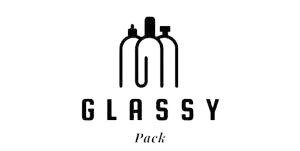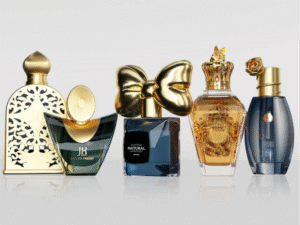The global glass bottle market has experienced significant growth in recent years, driven by rising consumption in various industries, particularly alcoholic and non-alcoholic beverages, as well as the pharmaceutical sector. Glass bottles have long been preferred for their aesthetic appeal, durability, and sustainability. Consumers and businesses alike are leaning towards glass as an eco-friendly alternative to plastic, boosting demand even further.
According to market projections, the global glass container market is expected to grow at a compound annual growth rate (CAGR) of 4-5% between 2022 and 2026. This growth is largely attributed to increased consumption of beverages and expanding pharmaceutical needs. Notably, the wine and spirits sector is expected to play a major role, with a projected CAGR of 3-5% over the next five years. Another key factor in the growth of the glass bottle industry is the trend of premiumization, particularly among craft distilleries, which are increasingly investing in high-quality, custom-designed bottles to enhance their brand identity.

Table of Contents
1. Rising Consumption of Alcoholic and Non-Alcoholic Beverages Driving Market Growth
Global Glass Bottle Market Growth: Projections and Statistics
The global demand for glass bottles is being driven by an increase in the consumption of both alcoholic and non-alcoholic beverages. The overall market for glass containers is forecasted to expand at a CAGR of 4-5% from 2022 to 2026, highlighting its resilience and growth potential.
| Beverage Segment | Projected CAGR (2022-2026) |
|---|---|
| Alcoholic Beverages | 4.5% |
| Non-Alcoholic Beverages | 4.0% |
| Craft Spirits & Distilleries | 5.0% |
Key Growth Drivers: Alcoholic and Non-Alcoholic Beverages
Alcoholic beverages, particularly wine, spirits, and beer, are some of the primary drivers of growth in the glass bottle market. Consumers of these products associate glass packaging with premium quality, further fueling demand. Moreover, the craft distillery movement is gaining momentum globally, with small-scale producers of spirits and beer choosing unique glass packaging to differentiate their products.
On the non-alcoholic side, bottled water, juices, carbonated drinks, and energy beverages are increasingly being sold in glass due to growing consumer preference for eco-friendly and safe packaging. Glass packaging not only provides a premium feel but also ensures the purity and taste of beverages, making it highly desirable in both premium and mainstream markets.
The Role of Sustainability in Increasing Glass Bottle Consumption
Sustainability is playing a pivotal role in the rise of glass bottle consumption. With a growing global emphasis on reducing plastic waste, consumers and businesses are looking for alternatives. Glass, being 100% recyclable and reusable, fits the bill perfectly. The circular economy approach of recycling glass into new bottles is attracting eco-conscious brands and consumers alike. As consumers become more mindful of their environmental impact, the use of glass over plastic is expected to rise steadily in the coming years.

2.Craft Distilleries and Premiumization: Elevating the Demand for High-Quality Glass Packaging
Craft Distilleries: A Growing Segment in the Beverage Industry
Craft distilleries are an exciting and fast-growing segment of the beverage industry. These small-batch producers focus on quality, authenticity, and craftsmanship, and their products often come with higher price points. As a result, packaging plays a crucial role in conveying the premium nature of the products. Custom glass bottles are increasingly the packaging of choice for these distilleries, as they reflect the artisanal nature of the products inside.
The premiumization trend is not limited to spirits alone. Craft breweries and specialty wine producers are also leveraging the appeal of custom glass bottles to enhance their product’s shelf appeal. The growing popularity of premium alcoholic beverages is leading more brands to invest in high-end glass packaging that conveys sophistication and exclusivity.
Premiumization in Alcoholic Beverages and Its Impact on Glass Bottle Design
Premiumization refers to the shift toward higher-quality, often more expensive products that offer a superior experience. In the context of alcoholic beverages, premiumization is evident in the rising demand for craft spirits, premium wines, and artisanal beers. For brands to successfully market these premium products, the packaging needs to align with consumer expectations of luxury and quality.
Custom-designed glass bottles are a key element in premiumization. For instance, high-end spirits often come in bottles with intricate designs, unique shapes, and luxurious finishes. These custom bottles help the product stand out on shelves and reinforce the brand’s message of quality.
Popular Premiumization Strategies in Glass Packaging:
- Unique bottle shapes: Creating memorable, distinctive shapes that reflect the brand’s identity.
- Premium labeling and closures: Using high-quality materials for labels and caps to enhance the bottle’s overall look.
- Decorative techniques: Embossing, engraving, and other decorative methods that give the bottle a luxurious feel.
Case Study: How Glass Bottle Design Enhanced a Craft Distillery’s Brand Identity
A notable example of premiumization through glass bottle design is Balcones Distillery, a Texas-based craft distillery known for its distinctive bottles. By working with a design team to create a bottle that echoed the artisanal, hand-crafted nature of their whiskey, Balcones was able to elevate its brand in the eyes of consumers. The bottle, with its bold shape and embossed logo, became a visual representation of the distillery’s commitment to quality and craftsmanship.

3.The Growing Demand for Glass Bottles in the Pharmaceutical Sector
Pharmaceutical Applications Driving Demand for Glass Containers
Beyond the beverage industry, glass bottles are also gaining traction in the pharmaceutical sector. Glass is the material of choice for packaging pharmaceuticals, particularly for liquid medicines, vaccines, and injectables, due to its chemical stability, durability, and impermeability.
With the increasing need for vaccines and injectables, particularly in light of the COVID-19 pandemic, the demand for glass containers in the pharmaceutical sector has surged. Pharmaceutical manufacturers require glass packaging that ensures the integrity and safety of their products.
Glass Bottles as a Trusted Material in Pharmaceuticals
Glass offers several advantages over plastic for pharmaceutical packaging. It is chemically inert, meaning it does not interact with the contents, which is critical for maintaining the efficacy of medicines. Additionally, glass is impermeable, ensuring that products remain sterile and free from contaminants.
Governments and regulatory agencies often mandate the use of glass for specific pharmaceutical applications due to its proven safety and reliability. As such, the pharmaceutical industry is expected to continue driving demand for glass bottles in the coming years.
4.Future Outlook: What’s Next for the Glass Bottle Market?
Projections for Glass Bottle Demand Over the Next Five Years
The future of the glass bottle market looks promising. The global demand for glass bottles is expected to continue growing, driven by the beverage and pharmaceutical sectors. Emerging markets in Asia and Africa are also contributing to this growth, as rising disposable incomes and changing consumer preferences boost demand for premium beverages and packaged goods.
Challenges and Opportunities for Glass Bottle Manufacturers
While the outlook is positive, there are several challenges that glass bottle manufacturers face. One of the key challenges is balancing sustainability with production costs. Glass production is energy-intensive, and manufacturers are exploring ways to reduce their environmental footprint by using renewable energy sources and recycling.
However, these challenges also present opportunities for innovation. Lightweight glass bottles, which reduce material usage and energy consumption during production and transportation, are becoming more popular. Additionally, manufacturers are exploring eco-friendly coatings and other innovations that improve the sustainability of glass packaging.
Conclusion
The glass bottle market is poised for sustained growth, driven by rising demand in the beverage and pharmaceutical sectors. Increased consumption of both alcoholic and non-alcoholic beverages, along with the premiumization of craft distilleries, is fueling demand for high-quality, custom glass packaging. In the pharmaceutical sector, glass remains a trusted material for packaging sensitive products.
As sustainability becomes a key consideration for consumers and businesses alike, the demand for glass bottles is expected to rise, positioning the glass packaging industry for a bright future.



